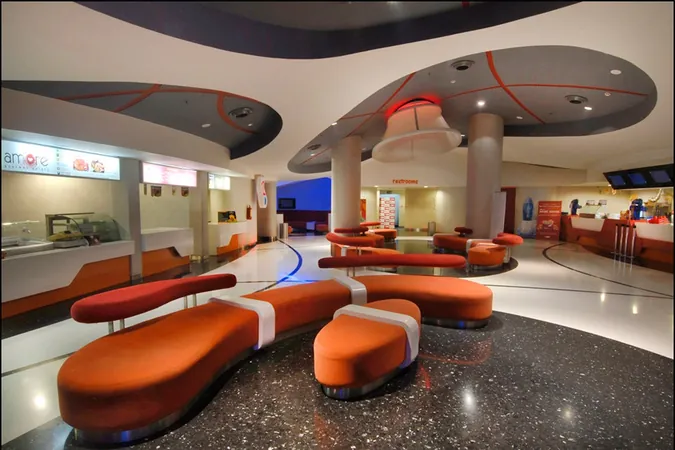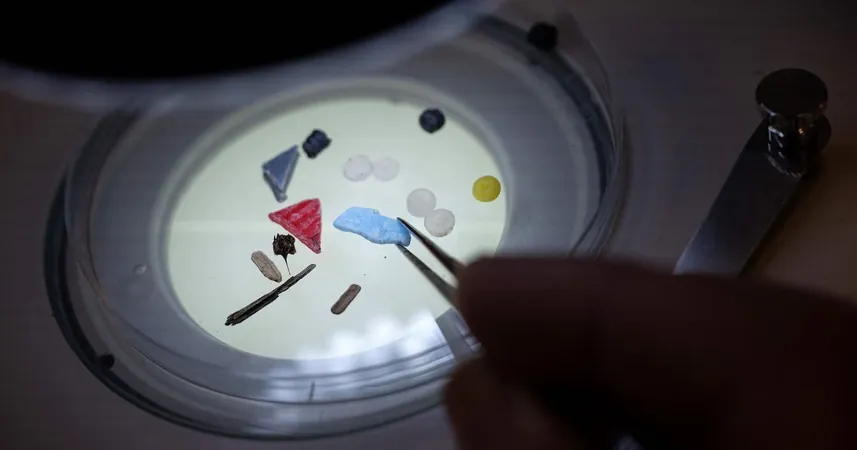
Unraveling the Mystery of Our Love for Curves: What Neuroscience Reveals
2025-01-10
Author: Noah
For over a century, psychologists have consistently found that people are irresistibly drawn to curves over straight lines in nearly every aspect of life—from the shapes we admire to the faces we find attractive, and even the designs of our living spaces. This intriguing preference has been seen not only in humans but also in infants and even our closest animal relatives, the great apes.
So why do we favor the curvy over the angular? Thanks to advancements in neuroscience, researchers have begun to delve into the brain’s inner workings to uncover the secrets behind this phenomenon. Oshin Vartanian, an associate professor of psychology at the University of Toronto, and his team are at the forefront of this research.
In a groundbreaking study published in Scientific Reports, Vartanian collaborated with PhD student Delaram Farzanfar, along with other experts, to explore how the brain responds to images of curvy versus angular spaces. Participants were asked to evaluate various spaces as either 'beautiful' or 'not beautiful' and then decide if they would 'enter' or 'exit' these spaces.
The findings revealed fascinating insights: specific brain regions activated primarily when evaluating beauty in curvy spaces, while they showed no response when participants made decisions about entering or exiting those areas. This indicates that the context of how we perceive curvature can significantly influence our brain's reactions.
The fusiform gyrus, a region known for its role in visual processing and facial recognition, was particularly responsive to curvy scenes. This suggests that our appreciation for curvature may be linked to our ability to perceive and differentiate between faces—a connection that hadn’t been previously established.
Interestingly, researchers noted discrepancies between participants' perceptions of certain curvy spaces and computational measurements of those spaces. Nonetheless, the primary visual cortex consistently responded to curvature, regardless of the task at hand. Vartanian hypothesizes that when we view an image, our brains might construct a three-dimensional mental representation that isn't captured by standard two-dimensional measurements. This complex cognitive process opens avenues for understanding how we conceptualize aesthetic appeal beyond mere geometry.
Bernhardt-Walther, another co-author, highlighted an important challenge for future research: identifying which visual elements create the sense of curviness that we find aesthetically pleasing. He stated, “Artists and designers have long recognized the power of organic, curvy lines to evoke comfort and beauty, and our findings can provide a scientific basis for these intuitions.”
This research extends beyond academic realms; it carries significant implications for artists, designers, architects, and city planners. Understanding how spaces influence our emotions and cognitive function could pave the way for creating environments that enhance our well-being. Farzanfar emphasizes this potential: 'As we learn more about the impact of spaces on mood and cognition, we can craft better, more enriching environments for the modern world.'
In an era where our built environments profoundly shape our everyday lives, this study sheds light on how a simple preference for curves could contribute to more aesthetically pleasing and healthier living spaces. So the next time you admire a beautifully curved architectural design, remember that your brain is working in intricate ways to process what you see—and your appreciation for curves might just have deeper roots than you realized!









 Brasil (PT)
Brasil (PT)
 Canada (EN)
Canada (EN)
 Chile (ES)
Chile (ES)
 Česko (CS)
Česko (CS)
 대한민국 (KO)
대한민국 (KO)
 España (ES)
España (ES)
 France (FR)
France (FR)
 Hong Kong (EN)
Hong Kong (EN)
 Italia (IT)
Italia (IT)
 日本 (JA)
日本 (JA)
 Magyarország (HU)
Magyarország (HU)
 Norge (NO)
Norge (NO)
 Polska (PL)
Polska (PL)
 Schweiz (DE)
Schweiz (DE)
 Singapore (EN)
Singapore (EN)
 Sverige (SV)
Sverige (SV)
 Suomi (FI)
Suomi (FI)
 Türkiye (TR)
Türkiye (TR)
 الإمارات العربية المتحدة (AR)
الإمارات العربية المتحدة (AR)